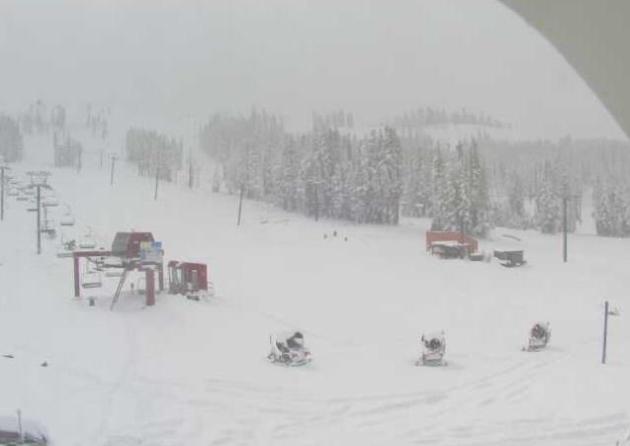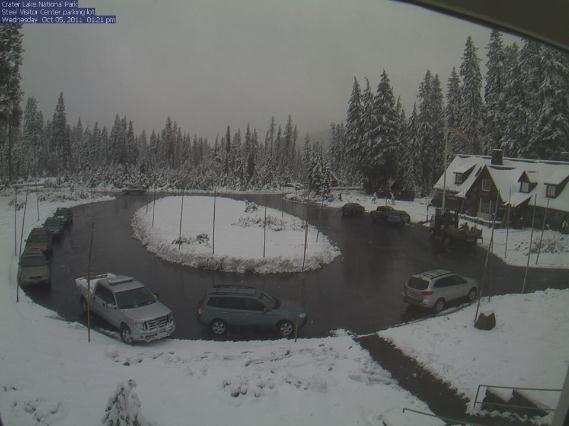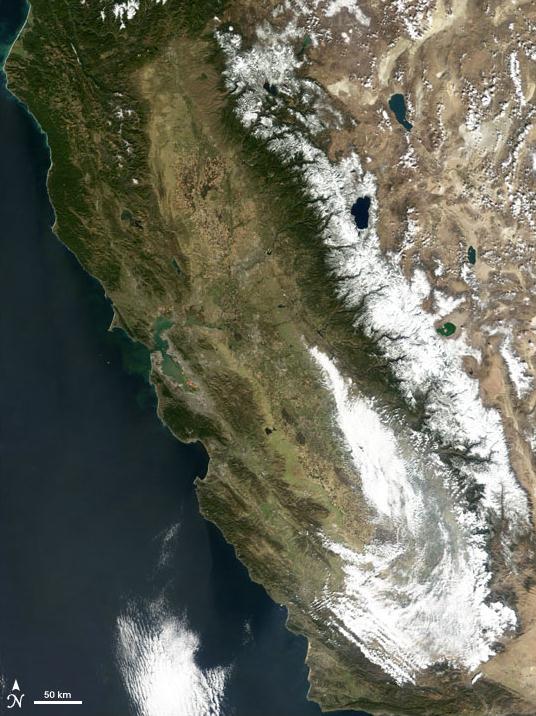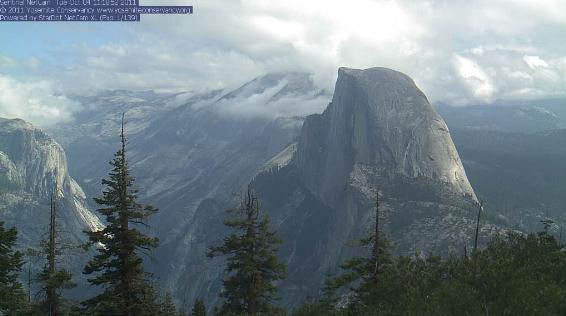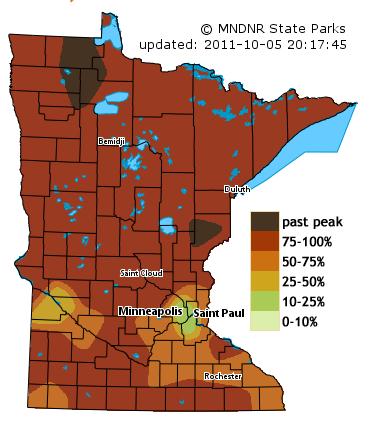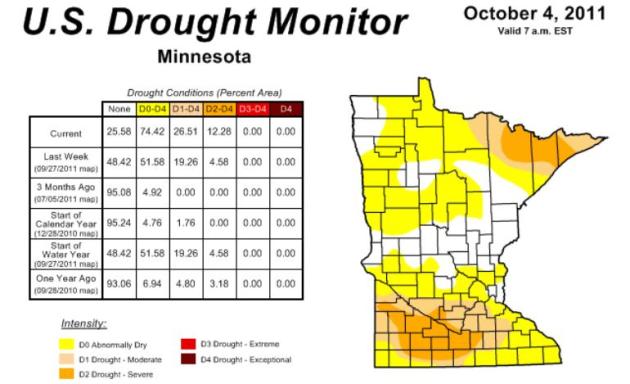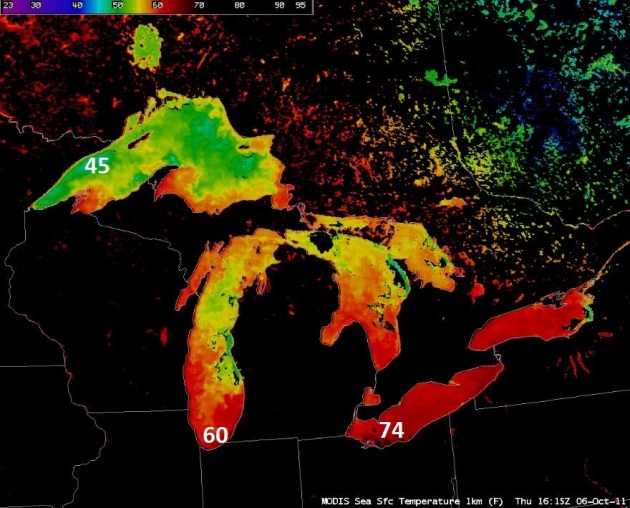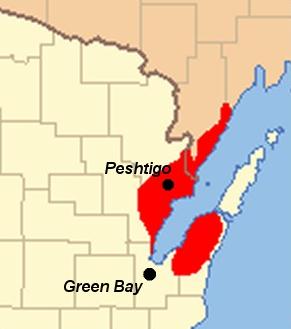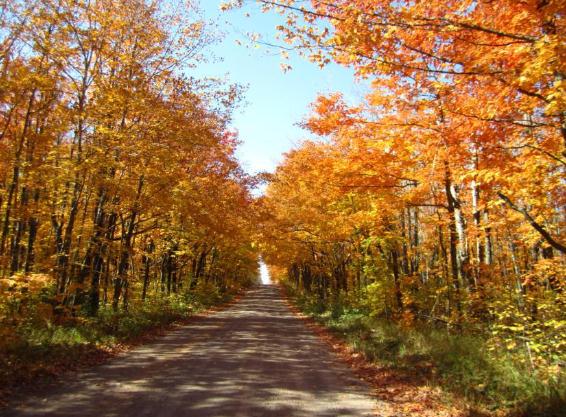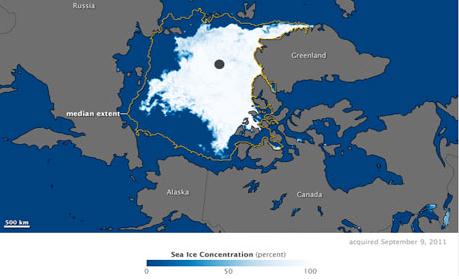
If the mercury hits 80 again today (likely) it will be 6 days above 80 so far in October in the Twin Cities. That's
the most number of 80-degree days since 1953, when MSP experienced 8 days above 80, according to Pete Boulay at the State Climate Office.
 October Severe Threat
October Severe Threat. Rare, yes. Not exactly unprecedented. An eastward push of cooler, Canadian air may spark a few strong to severe storms from Minnesota southward to Omaha, Wichita to Altus, Oklahoma, according to SPC.
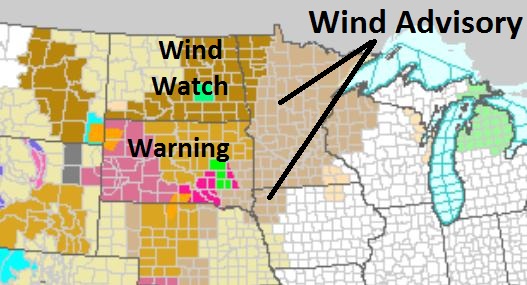 Wind Advisory
Wind Advisory in effect today for gusts over 35 mph. at times. Details from the National Weather Service:
...STRONG SOUTHERLY WINDS CONTINUING THROUGH FRIDAY EVENING.....
A WIND ADVISORY REMAINS IN EFFECT FOR WEST CENTRAL MINNESOTA THROUGH FRIDAY EVENING. A WIND ADVISORY HAD BEEN ISSUED FOR PORTIONS OF CENTRAL MINNESOTA AND WEST CENTRAL WISCONSIN STARTING FRIDAY MORNING AND CONTINUING INTO THE EVENING HOURS FRIDAY NIGHT.
STRONG SOUTHERLY WINDS OF 30 TO 35 MPH WILL BE COMMON OVER THE ADVISORY AREA. THE WINDS WILL DECREASE SOMEWHAT TO 20 TO 30 MPH SUSTAIN OVERNIGHT TONIGHT...BEFORE RAMPING BACK UP AGAIN DURING THE DAY ON FRIDAY. WIND GUSTS COULD EXCEED OVER 50 MPH OVER PORTIONS OF SOUTH CENTRAL MINNESOTA AND WESTERN WISCONSIN DURING THE DAY ON FRIDAY.
THE WINDS ARE FORECAST TO DIMINISH UNDER 20 MILES AN HOUR AFTER MIDNIGHT FRIDAY.
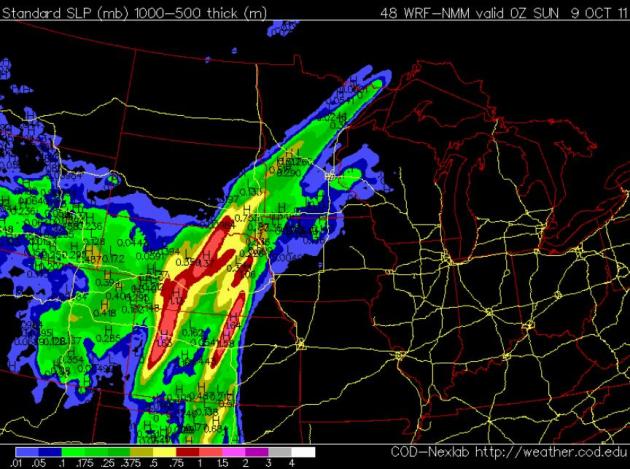 Showery Saturday
Showery Saturday. A cool front is forecast to slow down, possibly stall (temporarily) just west of MSP over the weekend. The metro area will probably be on the warm side of the front for much of Saturday, highs well up into the 70s - if the sun comes out for a couple hours 80 is not out of the question. The chance of showers/T-storms will increase the closer you get to St. Cloud, Willmar and Marshall - the heaviest rains staying over Nebraska and Kansas. NAM forecast map above valid 7 pm Saturday, showing accumulated rainfall for the previous 6 hours.
22" of snow at Squaw Valley, California the last 2-3 days. Click
here to see the latest webcam.
Peaking Fall Color. If you're interested in heading out on a little field trip to see ripening autumn leaves, you'll want to do so in the next few days. Fall color is peaking statewide. Thanks to Trevor Dulka who took this picture of Riverside Trail at William O'Brien State Park. More from the MN DNR below.
"...
Studies in Europe and in Japan already indicate leaves are changing color and dropping later, so it stands to reason that it's happening here as well, said Richard Primack, professor of biology at Boston University." - from a Huffington Post article on climate change impacting fall color below.
"...
The rapid climate change could be good news for the world's shipping companies, as sea ice decreased enough to open up both the Northwest Passage and the Northern Sea route for brief periods in September. Several companies reported significant savings by completing voyages through the new routes this summer, with Danish shipping company Nordic Bulk Carriers claiming to have saved a third on its usual costs and nearly half the time shipping goods to China via the Arctic." - article below from the International Business Times.
Winter Wonderland. 6-10" of snow has fallen at Crater Lake National Park in Oregon.
First Major Snowfall Of The Winter Season. NASA's
Earth Observatory has more: "
A powerful Alaskan storm swept over California during the final week of October, drenching the state with record rain and snow. The storm was the second large storm to move over California in as many weeks, and it left the Sierra Nevada Mountains coated in snow. In this Moderate Resolution Imaging Spectroradiometer (MODIS) image, taken by NASA’s Terra satellite on October 31, 2004, after the clouds cleared, snow highlights the peaks of the long mountain chain that forms California’s eastern border with Nevada. According to the Associated Press, the central Sierra Nevada received as much as 48 inches (1.2 meters) of snow in October, allowing ski resorts to open earlier than normal. Ski resort owners are not the only people who are pleased with the snowfall California relies heavily on melting snow for its water supply. Like much of the west, California has been in drought for the past six years, and while this snowfall alone is not enough to end the drought, it will help. At the end of October, many locations in California had set new records for monthly rain or snowfall totals."
Snowstorm: Before & After. The pics above are from a Yosemite webcam at Sentinel Dome. The top image was taken on October 4, before the storm arrived. The lower image was snapped yesterday, visibility about 50 feet in moderate to heavy snow. Click
here to see the latest conditions for yourself, courtesy of yosemiteconservancy.org.
Peak Color. The immediate Twin Cities metro area is showing 10-50% color, but just outside the Twin Cities colors will probably be peaking in the next 2-5 days. For more details on where to see splashes of rust, gold, lemon and pumpkin-colored leaves, click
here for the Minnesota DNR link.
Getting Drier. According to NOAA's Drought Monitor 74.42% of Minnesota is "abnormally dry" - up from 51% last week. 26% of the state is in a moderate drought, up from 19% just 7 days ago. The driest areas are southwestern and south central Minnesota, and the MN Arrowhead, but the immediate MSP metro is also drying out. We could use a good soaking right about now.
Alaska Waterspout. I know, it sounds like an oxymoron. It's too cold up there for tornadoes and waterspouts, right? It turns out every state in the USA has experienced at least one tornado, although Alaska funnels are exceedingly rare. This waterspout photo is courtesy of the
Chicago Weather Center: "
This picture was taken around 10:00 on October 5th. This was located about 2 nautical miles south of Hinchinbrook Island in the Gulf of Alaska. At one point there was about 5."
Great Lakes Extremes. This
CIMSS image from the University of Wisconsin shows water temperatures in the Great Lakes, ranging from 45 along Minnesota's North Shore to 60 off Navy Pier (Chicago), to 74 off the coast of Sandusky, Ohio. Depth of the water is a big factor in how much lake water can warm during the summer and fall months. As a rule of thumb: the deeper the water, the colder the temperatures.
Scotland Sees First Snowfall Of The Season.
Irishweatheronline.com has the story:
"The first snowfall of the season in Ireland and the UK was recorded in the Cairngorms mountain range overnight. The Cairngorms are a range of the Grampian Mountains in central Scotland rising to 1,309 m (4,295 ft) at Ben Macdhui. It is a popular winter sports area. According to iWeather Online’s Fergal Tierney: “The snowfall is associated with a cold airmass, which originated over the Labrador Sea in northeast Canada and Greenland earlier this week. The cold weather is not expected to last, however, with milder airmass being re-established over Ireland and the UK on Friday.” The snowline in Scotland on Thursday was down to 800 metres, according to wetter3.de."
On October 8, 1871, the most devastating forest fire in American history swept through northeast Wisconsin, claiming 1200 lives. Here is more information from the Green Bay office of the
National Weather Service and the Green Bay Press-Gazette: "
On October 8, 1871, the most devastating forest fire in American history swept through northeast Wisconsin, claiming 1200 lives. The anniversary of the Peshtigo Fire usually receives little note outside the region because another horrific fire the same night -- the great Chicago Fire -- still seems to hog the headlines. "Part of it is that myth of the cow -- Mrs. O'Leary's cow tipping over the lantern," said Debra Anderson, an archivist for the University of Wisconsin-Green Bay Area Research Center, referring to the way the Chicago fire allegedly started. "And, Chicago was and still is a bigger city." While Chicago's story may be more colorful, researchers still find the Peshtigo Fire worth studying, Anderson said. The Area Research Center, the state historical society's depository for records for 11 counties in Northeast Wisconsin, has papers and manuscripts of all kinds, she said. The story of the Peshtigo Fire, gleaned from survivor accounts and conjecture, is that railroad workers clearing land for tracks that Sunday evening started a brush fire which, somehow, became an inferno. It had been an unusually dry summer, and the fire moved fast. Some survivors said it moved so fast it was "like a tornado." The sudden, convulsive speed of the flames consumed available oxygen. Some trying to flee burst into flames. It scorched 1.2 million acres, although it skipped over Green Bay to burn parts of Door and Kewaunee counties. The damage estimate was at $169 million, about the same as for the Chicago Fire. The fire also burned 16 other towns, but the damage in Peshtigo was the worst. The city was gone in an hour. In Peshtigo alone, 800 lives were lost."
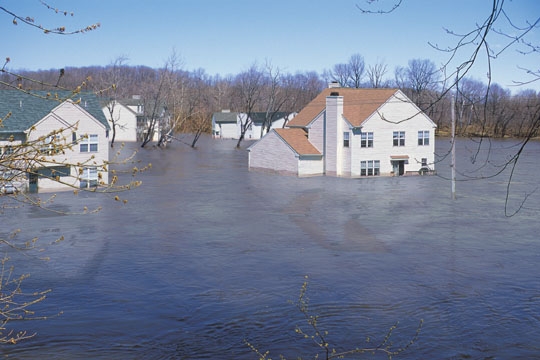 Whew! Flood Insurance Still Available
Whew! Flood Insurance Still Available.
MSN has the details: "
It was yet another punt by Congress: Elected officials in Washington, D.C., failed to pass a bill reforming the National Flood Insurance Program this week. However, they extended the program until Nov. 18, giving them time to close a deal that reportedly has support from both parties. What it means: If you're buying a home -- or trying to insure one against flooding -- in one of 20,000 communities participating in the program, you'll be able to buy flood insurance, a requirement for some purchases. The continuing resolution authorizing the short-term extension now goes to President Obama, who's expected to sign it, says HousingWire. You can't usually get flood insurance as part of a homeowners insurance policy. Private companies say it's too expensive to provide. The government program, run by FEMA through partnerships with private insurers, subsidizes premiums, making them affordable. "The program was originally intended to pay for itself, but since Hurricane Katrina, it's been heavily in debt," writes Ezra Klein at The Washington Post. Payouts after the disastrous 2005 and 2008 hurricanes and floods left it $19 billion in the hole, says this article in Science magazine (.pdf file)."
Watching Out For Falling Stars, With Smartphone In Hand. If you're an astronomy buff you'll want to check out this article from the
New York Times, focused on what you can now do on a smartphone (increasing the odds of seeing a lucky shooting star). "
Fortunately, you can still track and watch coming meteor showers and other astronomical phenomena if you have a smartphone loaded with Meteor Shower Guide ($1 on Apple) or Meteor Shower Calendar (free on Android), and two great star-viewing apps, StarWalk ($3 on iPhone; $5 on iPad) and Google Sky Map (free on Android). Now is a good time for stargazing, particularly with children. The night sky is more clearly visible in mid-evening than in the summer months, and for people in the Northern states, it’s not so cold that everyone will run inside after spotting Orion’s belt."
More On Steve Jobs' Life. Click
here to see Steve Jobs commencement address to Stanford students back in 2005. If you haven't seen this - it's definitely worth your time. Thanks to RTNDA.org for sharing this. Thanks to Barry Ritholtz at the (excellent)
Big Picture for this list of URL's.
• Steven Paul Jobs, 1955-2011 (WSJ)
• Steve Jobs, Apple’s Visionary, Dies at 56 (NYT)
• Apple Fans From Cupertino to Singapore Mourn Passing of Jobs (Bloomberg)
• Steve Jobs’ 2005 Stanford Commencement Address (Video)
• Steve Jobs’s Best Quotes (Digits)
• His Life, His Companies, His Products (NYT interactive)
• boingboing goes old school Mac Classic (bb)
• Mossberg: The Steve Jobs I Knew (WSJ)
• Tech honchos remember Steve Jobs (Digits)
• A Look Back at Steve Jobs of Apple (Dealbook)
• Jobs’s Death Draws Outpouring of Grief and Tributes (NYT)
Explosion Of Color. Thanks to WeatherNation meteorologist Todd Nelson for sharing a recent photo snapped up on the North Shore of Lake Superior.
 Climate Stories...
Climate Stories...
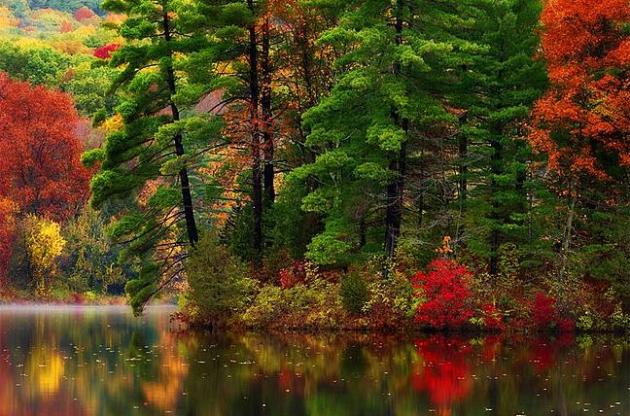 Fall Foliage: Leaves Could Change Color And Drop Later, Scientists Say
Fall Foliage: Leaves Could Change Color And Drop Later, Scientists Say.
Huffington Post has a story on how a slowly warming environment may affect fall foliage over North America: "
PORTLAND, Maine -- Clocks may not be the only thing falling back: That signature autumn change in leaf colors may be drifting further down the calendar. Scientists don't quite know if global warming is changing the signs of fall like it already has with an earlier-arriving spring. They're turning their attention to fall foliage in hopes of determining whether climate change is leading to a later arrival of autumn's golden, orange and red hues. Studies in Europe and in Japan already indicate leaves are changing color and dropping later, so it stands to reason that it's happening here as well, said Richard Primack, professor of biology at Boston University. "The fall foliage is going to get pushed back," Primack warned. Down the road, scientists say there could be implications not just for ecology but for the economy if duller or delayed colors discourage leaf-peeping tourists."
Global Warming: Melting Arctic Ice Opens New Shipping Lanes. The
International Business Times has the (amazing) details: "
The sea ice is not only declining; the pace of the decline is becoming more drastic," he noted. "The older, thicker ice is declining faster than the rest, making for a more vulnerable perennial ice cover." The rapid climate change could be good news for the world's shipping companies, as sea ice decreased enough to open up both the Northwest Passage and the Northern Sea route for brief periods in September. Several companies reported significant savings by completing voyages through the new routes this summer, with Danish shipping company Nordic Bulk Carriers claiming to have saved a third on its usual costs and nearly half the time shipping goods to China via the Arctic. "We saved 1,000 tons of bunker fuel - nearly 3,000 tons of CO2 - on one journey between Murmansk [Russia] and north China," Christian Bonfils, a director of Nordic Bulk Carriers, told the Guardian."
 Study: Climate Change To Impact Where Wine Grapes Can Grow.
Study: Climate Change To Impact Where Wine Grapes Can Grow. Uh oh. First coffee - now wine?
Two of the most precious fluids on Earth, more critical to daily life than even....oil? Now it's serious.
USA Today has the story: "
To the litany of changes being wrought by global warming, we may be able to add one more: where wine grapes can and can't be grown. Within 30 years, the areas where California can grow fine wine grapes could shrink because of climate change, while little-known growing regions such as Seattle's Puget Sound and Oregon's Willamette Valley see growth, according to one controversial study. A federal agency report in 2009 found that average U.S. temperatures could increase 2 to 4 degrees by 2020 compared with the 1970s' average. That's not huge, but the best grapes "grow in a narrow geographic range that exhibits a narrow climate envelope," says Noah Diffenbaugh, a climate scientist at Stanford University."




